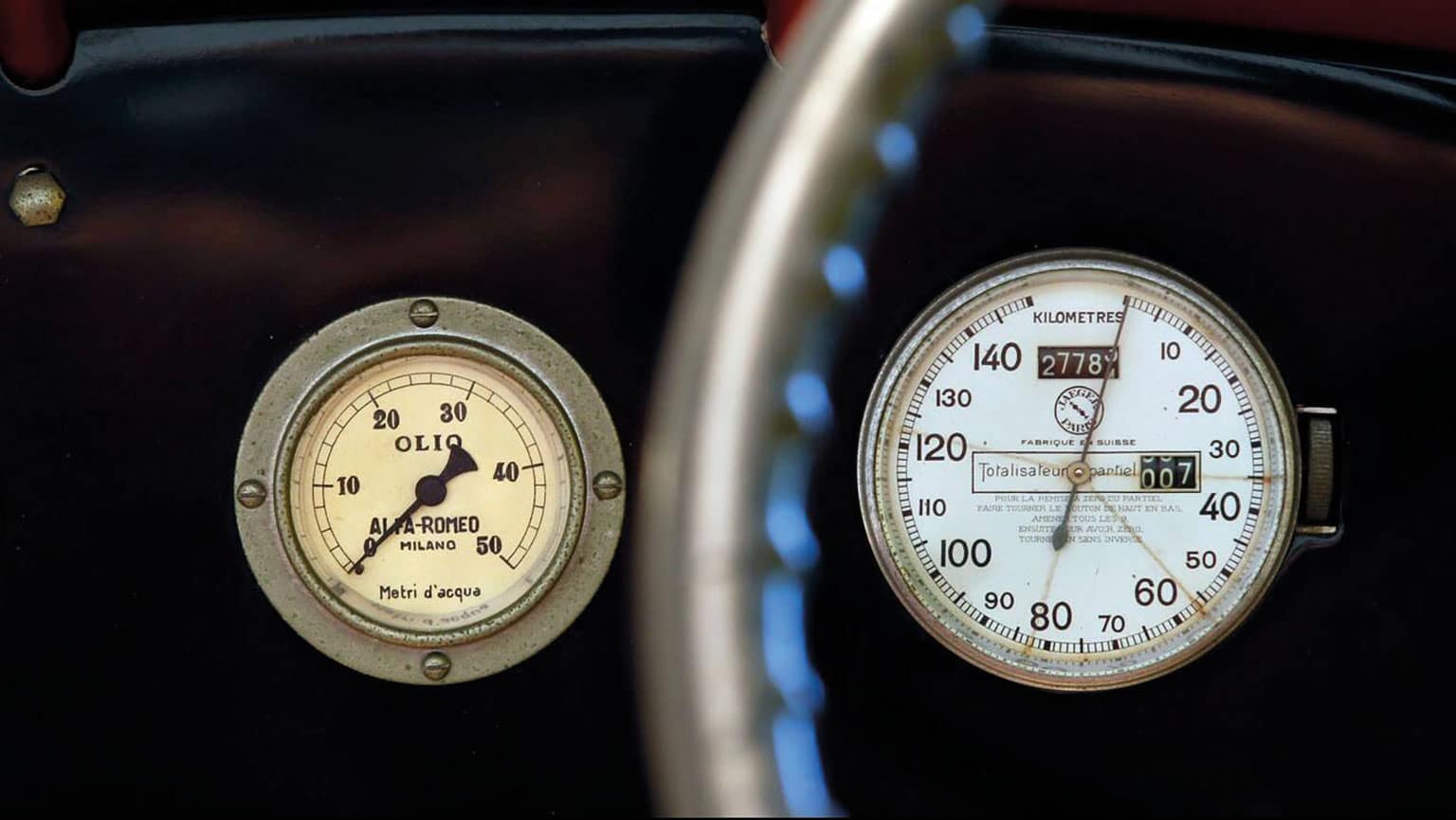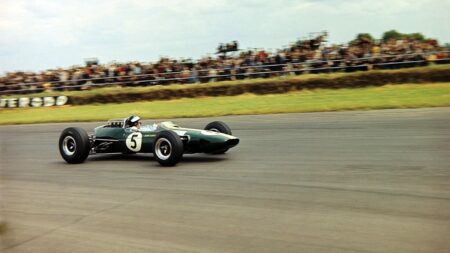
F1: Race report, August 1965
This year the R.A.C. sold the rights of the British Grand Prix to the British Racing Drivers’ Club and they enlisted the support of the Daily Express to organise the event at…

On the 16th of December last the Scuderia Ferrari celebrated its annual banquet, and talk naturally turned to the problem of challenging the new German cars. Signor Enzo and his colleagues realised that the 3-litre Type B Monoposto Alfa-Romeo, even when bored out to 3.2 litres and fitted with a specially streamlined body, could not hope to compete with the 4- and 5-litre Mercedes-Benz and AutoUnions. What, then, was to be done?
It was at this point that Signor Bazzi, technical director of the Scuderia, came forward with his idea of a solution to the problem. Briefly, this was to couple up a brace of 3-litre engines in a Monoposto chassis, and fit it with independent springing and a streamlined body. The result: a 225mph motor car, eminently suitable for the non-formula races of Avus, Tunis and Tripoli.
Thus was born the Alfa-Romeo Bimotore. Signor Bazzi, assisted by his able henchman, Arnaldo Roselli, promptly got to work in his drawing office, and three months later, the actual car has been completed and made its first trials. Before going on to describe the layout of this remarkable car, it must be pointed out that although designated an Alfa-Romeo, all the work of its design and assembly has been carried out in the workshops of the Scuderia, at Modena. Signor Jano has given it no more than his blessing. Truly might the Bimotore be called a Ferrari-Alfa.
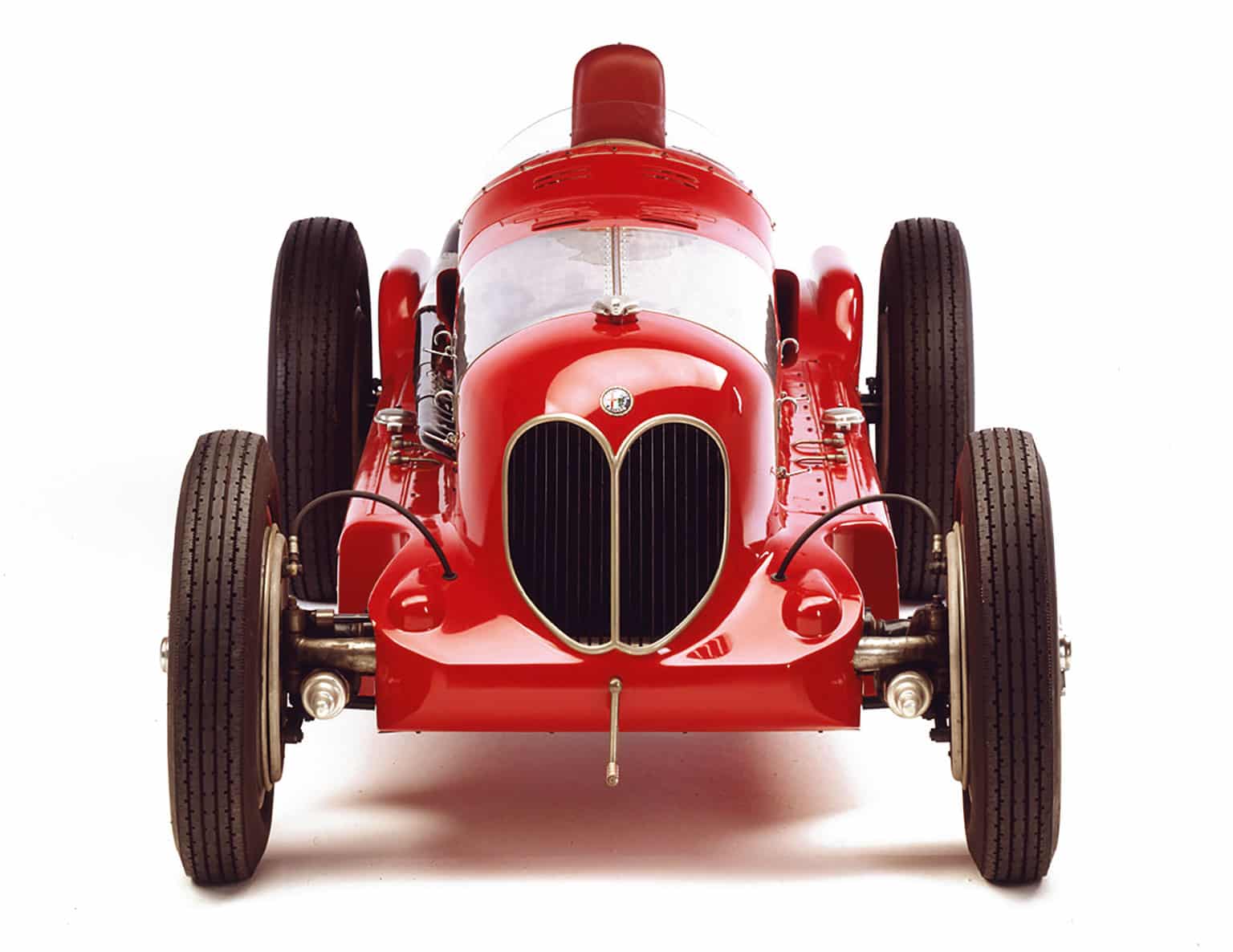
First of all, a Monoposto chassis was lengthened, but only by 15cm, and into this were installed two Type 13 3-litre engines. The chassis members are of C section. In passing, these power units have 8-cylinders of 68mm bore and 100mm stroke, with a capacity for each engine of 2905cc. Thus the Bimotore has a total cubic capacity of 5810cc. Each 3-litre engine gives 270bhp, at its peak revs of 5500rpm. The power output is therefore about 90bhp per litre, as opposed to the 76bhp per litre of the German cars. Two Roots-type superchargers are on each engine, with twin Weber carbs.
The front engine is situated in a normal position, while the rear unit occupies the centre of the triangle formed by the back axle and the two-propellor shafts, i.e, the position used for the driver’s seat in the 3-litre Monopostos. In the new car the driver sits on top of the gearbox, between the two engines. The engines, are synchronised, the rear one being placed back-to-front and connected to the gearbox by means of internal gearing in its flywheel. The dry plate clutch is of unique design, and is constructed of Duralfa and steel. The gearbox provides three forward speeds and reverse, all being constant mesh. Outside the gearbox is an arrangement of dogs, which disconnects the two engines to facilitate starting. First one and then the other is started up, and they are then coupled together. In the event of one engine giving trouble, it is possible for the driver to continue at reduced speed on a single engine. The differential is immediately behind the gearbox shaft, and consists of conical gears. The drive is then transmitted to the back axle by way of the usual twin propellor shafts, set at an angle. The rear axle is of special design jointed in the middle and steadied by radius rods, which allow some independent movement on the part of the two half axles.
The rear springs are semi-elliptical as heretofore, but with the addition of special shackles which give a floating effect. The front suspension is by the Dubonnet independent system, which incorporates oscillating arms and cylindrical coil springs. Built in with the cylinders are two shock absorbers per wheel, one hydraulic and one friction.
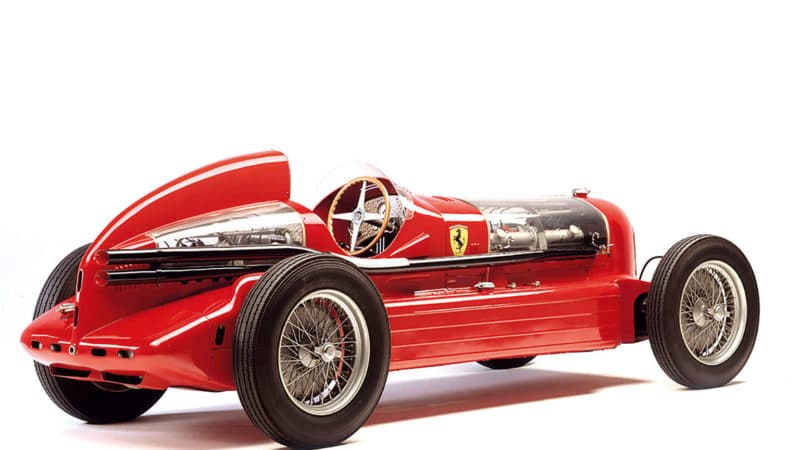
Boasting two 3-litre engines, the Bimotore was capable of out-gunning its German rivals, but persistent tyre issues brought on by its high weight ultimately meant it had a short competition life
Alamy
The advantages of the Dubonnet suspension, apart from the independent springing of each wheel, are firstly the reduction in unsprung weight and secondly, the stability of steering control due to the operating mechanism being securely attached to the chassis and therefore comparatively free from road shocks. The brakes are of the Ariston hydraulic pattern. Briefly, the chief feature is that all parts are kept under pressure from a special reservoir with a spring-loaded plunger, which prevents the possibility of air leaking into the piping when the brake pedal is released—an important advantage when braking from 200mph! The Ariston brake system is the work of the Farina coach-building concern in Milan.
The large radiator is split into two sections, each of which cools an engine. The cooling of the rear engine is, of course, assisted by large air-ports in the tail. On each side of the chassis are slung long petrol tanks, one for each engine, but inter-connected so as to ensure even balance and a range of 300 kilometres. A large oil tank is in the tail.
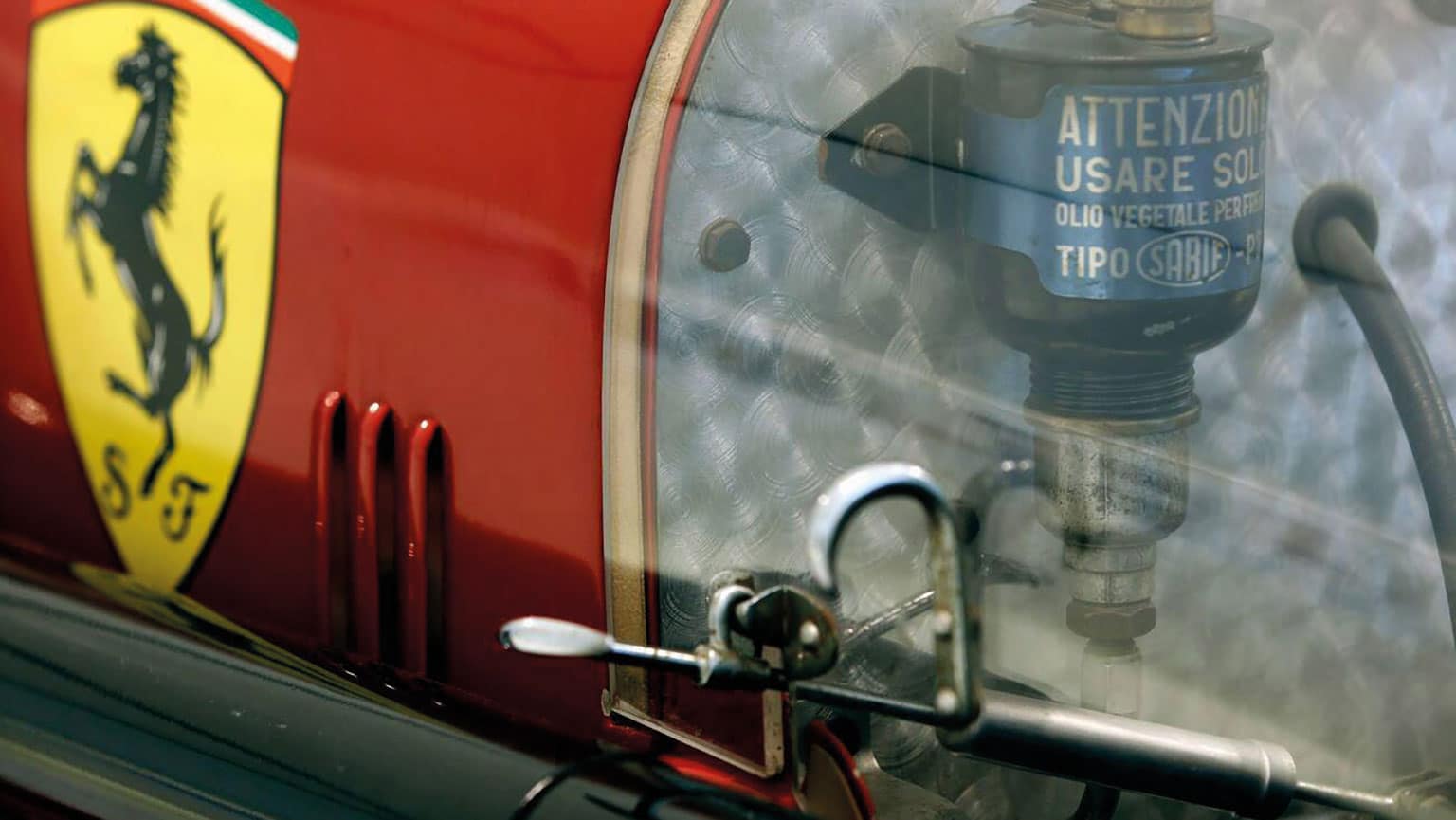
The dimensions of the Bimotore are as follows: Wheelbase 2800mm; track 1380mm; ground clearance 135mm; maximum height from ground level 1290mm; overall length 4200mm. Tyre sizes are: front 19×5.50, rear 19×6.50 and the weight is 1000kg. This projectile was brought out for its first trial last month. The Brescia-Bergamo Autostrada was used and the car was watched by a gathering of well-known personalities including Commendatore Enzo Ferrari himself, Vittorio Jano, technical director of Alfa-Romeo, representatives of the Pirelli Tyre Company, and various drivers such as Mario Tadini and Gianfranco Comotti. The first run was made by Attilio Marinoni, chief mechanic of the Scuderia Ferrari, who satisfied himself that the car was functioning perfectly before handing it over to Tazio Nuvolari.
The ‘Mantovano volante’, (The Flying Mantuan) as he is dramatically called in Italy, made one or two runs up and down the autostrada at a mere 175mph, or 4500rpm, in order to get accustomed to the feel of the car. At this speed the Bimotore ran effortlessly, so he proceeded to give her the gun. The car roared past the little group of watchers at a colossal speed, which stop-watches and rev counter (which read 5300rpm) showed to be 212mph.
When Nuvolari returned he was most enthusiastic about the car. Everything about it, he declared, was perfect; the steering, the brakes, the road holding, and the vast reserve of power. He thinks there will be no difficulty in reaching the car’s maximum speed of 225mph.
